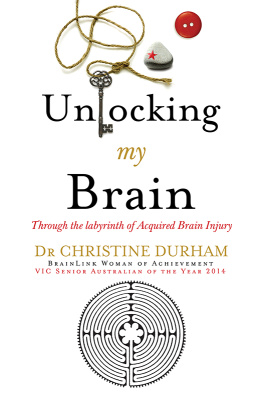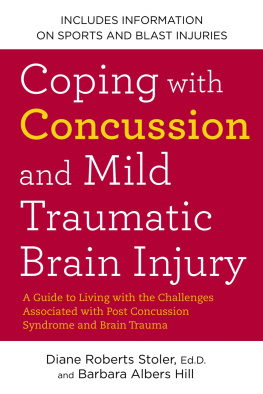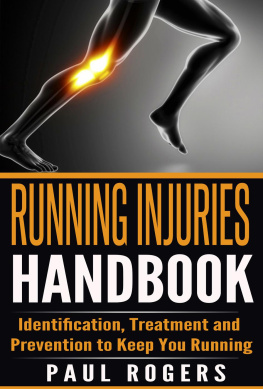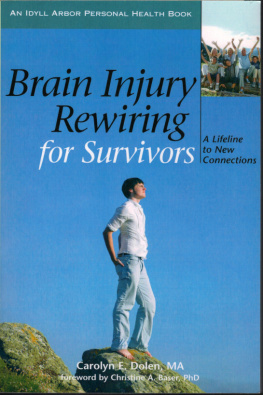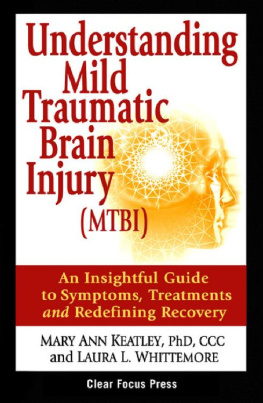Kedar N. Prasad - Treat Concussion, TBI, and PTSD with Vitamins and Antioxidants
Here you can read online Kedar N. Prasad - Treat Concussion, TBI, and PTSD with Vitamins and Antioxidants full text of the book (entire story) in english for free. Download pdf and epub, get meaning, cover and reviews about this ebook. year: 2015, publisher: Inner Traditions/Bear & Company, genre: Romance novel. Description of the work, (preface) as well as reviews are available. Best literature library LitArk.com created for fans of good reading and offers a wide selection of genres:
Romance novel
Science fiction
Adventure
Detective
Science
History
Home and family
Prose
Art
Politics
Computer
Non-fiction
Religion
Business
Children
Humor
Choose a favorite category and find really read worthwhile books. Enjoy immersion in the world of imagination, feel the emotions of the characters or learn something new for yourself, make an fascinating discovery.

- Book:Treat Concussion, TBI, and PTSD with Vitamins and Antioxidants
- Author:
- Publisher:Inner Traditions/Bear & Company
- Genre:
- Year:2015
- Rating:4 / 5
- Favourites:Add to favourites
- Your mark:
Treat Concussion, TBI, and PTSD with Vitamins and Antioxidants: summary, description and annotation
We offer to read an annotation, description, summary or preface (depends on what the author of the book "Treat Concussion, TBI, and PTSD with Vitamins and Antioxidants" wrote himself). If you haven't found the necessary information about the book — write in the comments, we will try to find it.
Provides an easy-to-follow program of supplements to optimize the benefits of treatment programs and offer a method of prevention beyond the use of helmets
Shows how standard treatments do not address the oxidative stress, chronic inflammation, and high glutamate levels that promote brain injury progression
Explains how single micronutrients do not provide the same preventive benefits as the synergistic combinations explored in the book
The human brain is highly complex. When brain injury strikes, whether from a blow to the head or the shock of physical or emotional trauma, successful treatment requires a multilevel approach, taking into account the health of the brain prior to injury. Multilevel, complementary treatment approaches can also be applied to strengthen the uninjured brain and help prevent neurological injury for those at high risk of concussion, post-traumatic stress disorder, and traumatic brain injury.
In this practical scientific guide, leading researcher in cancer, heart disease, and Alzheimers prevention Kedar N. Prasad, Ph.D., reveals the latest revolutionary discoveries on the use of antioxidants and micronutrients to manage and prevent concussive injury, TBI, and PTSD. He explains that increased oxidative stress, chronic inflammation, and glutamate release are common underlying factors in these conditions and should be addressed for improved management. He debunks the flawed conclusions of the neurological community that vitamins and antioxidants are ineffective for these conditions, revealing how their studies focused on specific micronutrients rather than synergistic combinations. The author details his easy-to-follow supplement program to treat and prevent these injuries, outlining the correct daily amounts and proper combinations of vitamins, antioxidants, micronutrients, and polyphenolic compounds such as curcumin and resveratrol.
Offering the missing complement to standard medical care of brain injury as well as a form of prevention beyond the use of helmets, this guide provides a truly holistic approach to the prevention and management of concussive injury, TBI, and PTSD.
Kedar N. Prasad: author's other books
Who wrote Treat Concussion, TBI, and PTSD with Vitamins and Antioxidants? Find out the surname, the name of the author of the book and a list of all author's works by series.

